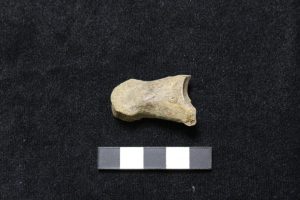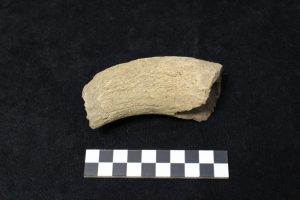The study and analysis of the faunal remains from the archaeological site of Vetricella are ongoing. Most of the anatomical and taxonomic identification of the remains is carried out at the Department of Historical Sciences and Cultural Heritage of the University of Siena, where a comparative osteological collection is located, including both wild and domestic species, mostly animal classes of macro mammals and birds. However, for some of the animal remains studied, the consultation of the large animal osteological collection of the Department of Archeology in Sheffield (England) was fundamental. In addition to the regular consultation of manuals such as Schmid (1972) and Barone (1976), the latter especially useful for the identification of domestic animals.
The good conservation status of the faunal remains under investigation, is well suited to the study method called “identification for diagnostic zones“. The application of this methodology is based on a series of theoretical assumptions related to the fact that the bone material found in archaeological contexts is usually fragmented, because, in most cases, it’s the result of food waste. The diagnostic zones, which represent some distinctive parts of each anatomical element, have been chosen both on the basis of the degree of conservation (therefore of availability during excavation), and the capability of distinguishing between species. The identification of these survey parameters makes it possible to use uniform and codified analysis criteria allowing to compare data from different contexts. In addition to this, it’s necessary to state that this methodology elaborates a division between the countable records, identifiable with the diagnostic areas, and the non- accountable ones. The latter, even if recognized anatomically and taxonomically, will not be included in the quantitative analyses of the zooarcheological sample, but will only serve to provide qualitative data (eg. presence of a rare species, presence of particular slaughtering traces, etc.).
At the moment, 500 fragments have been recorded, a number that includes both bones and teeth. These remains have not yet been divided by chronological phases and the distinction will be made once the process of registration of all animal remains will be brought to conclusion. Therefore, the data shown below are to be considered preliminary and therefore a high level of interpretative caution is required.
Considering the 500 recorded remains, pigs are the most represented species on the site. The stage of fusion of the epiphysis of post-cranial bones related to this species informs us about the presence of sub-adult individuals, but also of very young (neonatal) individuals. There are also some remains of fetuses. In addition to pig, there is also ox (with a significantly lower percentage); most post-cranial bones refer to very old individuals, probably employed for agricultural work. The presence of goats is very scarce. Among the wild species some remains belonging to the deer have been recorded. The presence of wild boar is not to be excluded, given the high percentage of bones and teeth related to Sus sp. Future biometric analyzes will provide further information on the presence of wild species on the site (Fig.1-2).


During the next months the recording of all the faunal remains will be concluded and the following analyses will be carried:
- analysis of the conservation status of the bone surface
- method of recovery during excavation
- the quantity of animal species present
- analysis on the age and sex of the animal species present
- distribution of animal carcasses on the site


